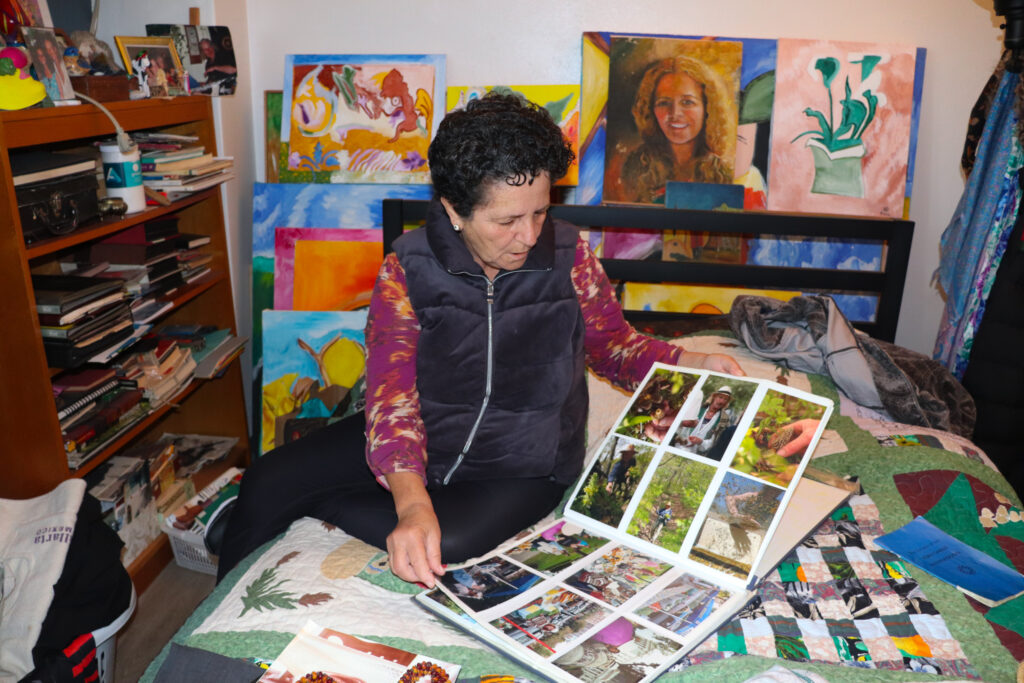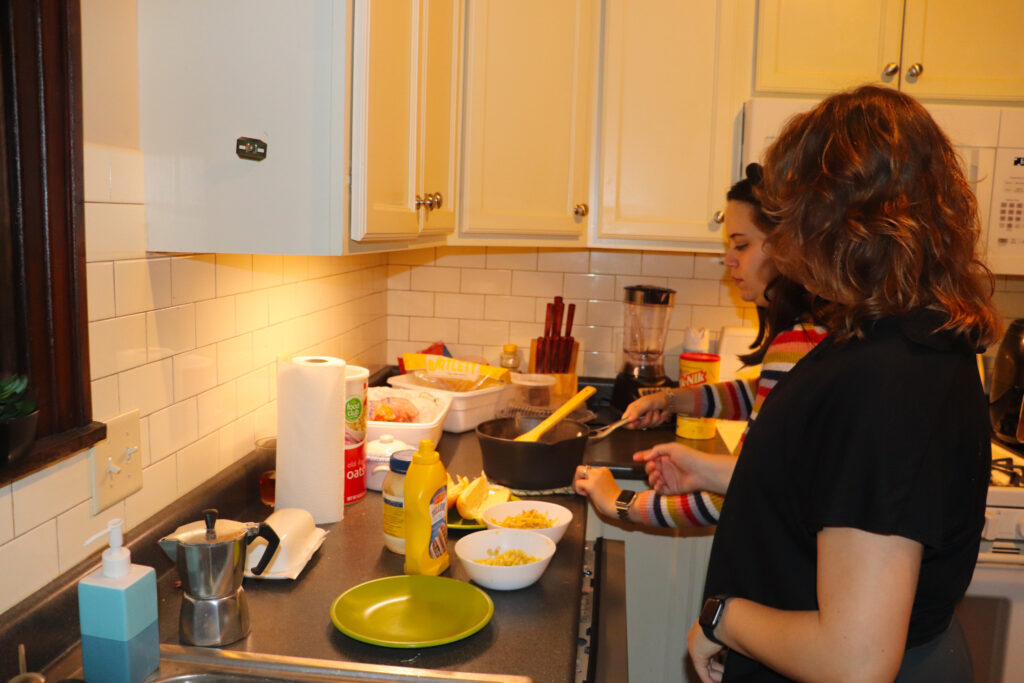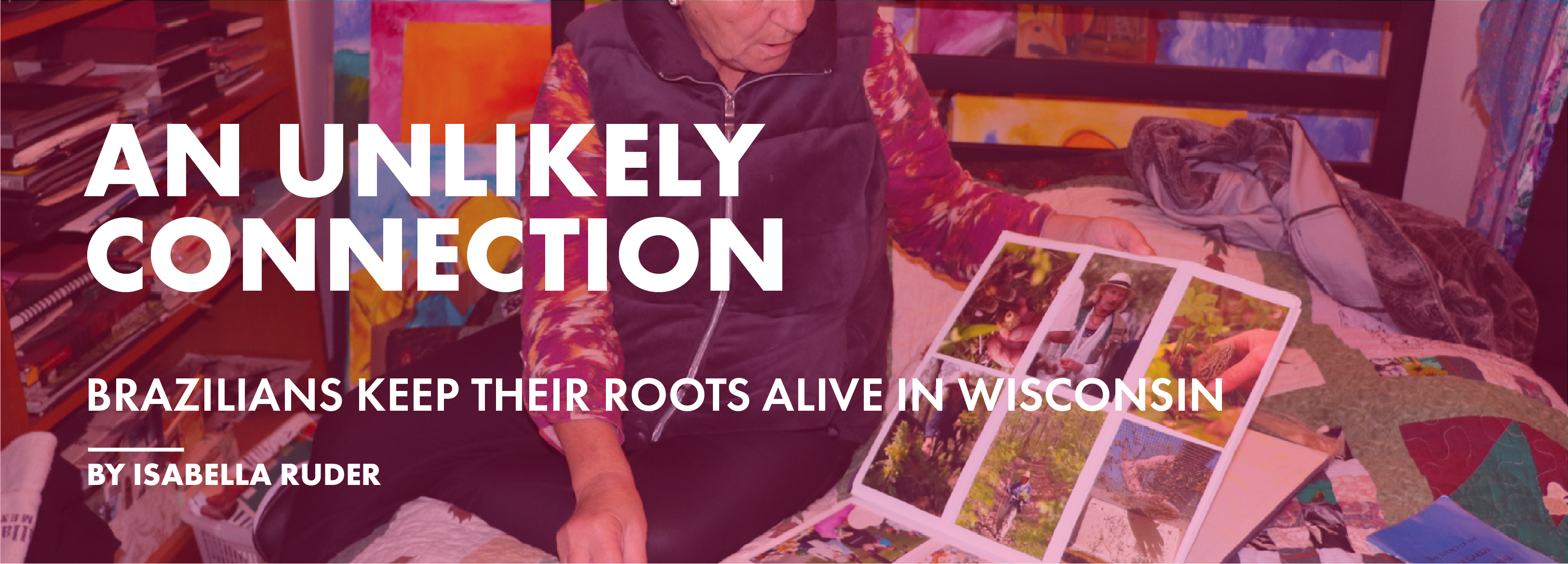Kilsa Dremsa flips through her scrapbooks: colorful toucans, whimsical waterfalls and lush green pastures.
These aren’t vacation memories, however. They’re snapshots of Dremsa’s homeland of Brazil. Even though she’s lived in Wisconsin for 25 years, these photos transport her back. With each turn of the page, her adventures in her homeland and in her adopted one tell the story of how both cultures have blended to create something beautiful.
“[The pictures] take me back to a very special time,” Dremsa says.
Wisconsin and Brazil make an unlikely combination — Rio de Janeiro is nearly 5,500 miles from Madison, and Brazilians account for about 3,117 of Wisconsin’s almost 5.9 million residents. But Brazil’s vibrant culture extends beyond its South American borders, leaving its mark on major cities and local towns across the state.
Brazilian influences are woven into Wisconsin’s culture, adding to the state’s rich and diverse cultural landscape. Through their shared experiences and deeply rooted love for their native food, language and traditions, generations of Brazilian Wisconsinites have blended their cultures in unique ways.

Fusion creates a subculture
When Dremsa moved from Brazil to Wisconsin, she lived in a cabin on five acres of land with her late husband, Francisco, and dove right into the Wisconsin agricultural scene. Her garden consisted of jalapeños, cabbage and okra. Okra, known for its unique grassy taste, is a popular fruit in Brazil, though it is often eaten as a vegetable. Already, Dremsa had begun to fuse both cultures by growing a Brazilian fruit among other vegetables on her farm.
Using ingredients from her garden, she made a variety of Brazilian dishes that allowed her to connect with her culture. The smell alone transported her home.
For some, like Dremsa, this was a conscious effort. She decided to grow Brazilian plants on her Wisconsin farm and cook Brazilian dishes for her husband. But for younger generations who have grown up in Wisconsin, they simultaneously blend cultures through their natural progression of growing up. Just because they grow up with Wisconsin culture does not mean cultural differences go unnoticed.
In first grade, Maria Brunetta, now 21 years old and a member of the Curb staff, experienced this firsthand as the only Brazilian student at her school in Brookfield, a suburb west of Milwaukee. Brunetta didn’t necessarily feel singled out for her culture after being born in Brazil but felt she lacked a connection with both groups of white and other underrepresented students in her class.
Brunetta hugged a classmate and was met with an unexpected response. She vividly remembers her classmate’s surprised words of “What are you doing?” when she greeted the friend with a hug — a common greeting in Brazil normally accompanied by a kiss on the cheek. After what Brunetta refers to as the “assimilation” of Wisconsin culture at school, she would go back home where she was immersed in Brazilian culture once again.
For some, it’s hard to put into words how they’ve meshed the cultures because of its natural progression, Brunetta says.
“It’s just a creation of a subculture of both American and Brazilian culture,” says Larissa Pasquini, a member of the Brazilian community from Brookfield. “It’s a meeting of two worlds.”
This subculture stems from a feeling of separation from Brazilian culture due to their constant exposure to life in Wisconsin. Their Brazilian roots remain the same, but there are significant differences between the two groups of people — those who live in Brazil and those who live in Wisconsin.
For Pasquini, the “white culture” ingrained in Brazilian Wisconsinites from years of living here can create a degree of separation from the community in Brazil. Pasquini says this is neither a good nor bad thing, but others might not understand the unique experiences of struggling to fit completely into one culture or the other.
“When I’m immersed in American culture, I’m not truly American because I have this Brazilian identity within me,” Pasquini says. “But I’m never fully Brazilian because I don’t really know their slang, I’m really bad at grammar and I’m behind on their culture. But it’s still part of me.”

The heart and soul of Brazilian culture
For many Brazilians, food is central to their culture. The art of cooking meals for oneself and their family is highly valued by all ages in the culture. The kitchen is a hub for creating unforgettable memories between family members — a place where meals become a vessel to carry on traditions from generation to generation.
Pasquini’s parents moved from Brazil to Miami, then to Utah, where Pasquini was born, and eventually to Wisconsin for her father’s work. Moving from their home in Brazil to settling down in their current home of Brookfield was no easy task. In between visits from her grandparents and her parents’ trips to Brazil, all they had was each other and, of course, some homemade Brazilian recipes like feijoada, a popular black bean and pork stew traditionally made with pig’s ear, feet and snout and Brazilian sausage but now mostly made with smoked pig parts.
Pasquini’s mother would often call family members back home using her paid international minutes to write down family recipes from her mother and mother-in-law, creating a one-of-a-kind recipe book.
Transporting new recipes enhances Wisconsin’s food scene and provides another avenue for Brazilians to connect with their culture. But sitting down and sharing a meal in and of itself is just as culturally significant.
With lunch being the main meal in Brazil, it’s common for colleagues and friends to leave the office to indulge in a substantial meal and good conversation. Brazil’s meal time ritually veers far from the U.S.’s traditional corporate, on-the-go lunch typically eaten while sitting at a cubicle or desk.
Flavia Mildenberg moved to Wisconsin at 26 years old and still remembers the Sundays when her mother would prepare food for the traditionally large lunch.
She reminisces about those mornings when the pressure cooker’s hissing echoed throughout the kitchen as it slowly cooked the afternoon meal. Conversation and laughter filled the room as the family enjoyed each other’s company. For many Brazilians, gathering around the table and feasting on a home-cooked meal brings back happy memories.
Even after 19 years of living in Wisconsin, Mildenberg still finds comfort in the familiar sound of a pressure cooker.
“It makes me happy,” Mildenberg says.
A bond formed through language
The familiarity of the Portuguese language also drives the Brazilian community closer together. Some feel a degree closer to Portuguese speakers because there is a mutual understanding of each other’s culture.
Susana Antunes, an associate professor of Portuguese and the Portuguese program coordinator at UW–Milwaukee, understands the importance of language. She has created events at the university for Portuguese students to gather and for the Brazilian community to connect through the Portuguese language.
“For people that came from a different country, this is something extremely important for us to feel that we are at home,” Antunes says. “And to be at home in a different country, I think the best way is to connect with other people — to talk about the culture and the language.”
Portuguese tables, an event where people are encouraged to speak the language in a casual setting, and “O Canto do Mar,” a creative writing journal produced by the Portuguese program and Spanish and Portuguese department at UW–Milwaukee, are just a few examples of how Antunes has united students and the community through the power of language.
Mildenberg agrees — language connects the community.
“If you hear somebody at the grocery store, and they are speaking Portuguese, your instinct is to go talk to that person,” Mildenberg says.
With Wisconsin’s small population of Brazilians, Portuguese isn’t regularly heard. In the rare case there is an opportunity to interact with another member of the Brazilian community, they are eager to meet one another and communicate in their native tongue. Speaking their language has allowed them to accurately express their feelings without the barrier of translation from one language to the other, says Andre Bonfatti, who was born in Brazil and later came to Madison with his wife.
“It makes me feel Brazilian again,” Dremsa says.
